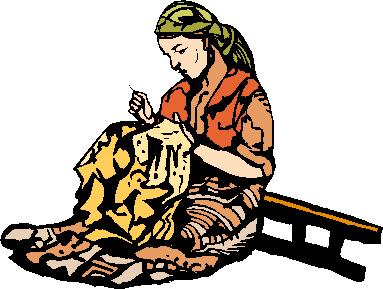Reading
Textbook, The Ordination of Women, etc.,
Chapter 2, ‘Papal teaching on slavery’, pp. 8-16.
Exercise 1
- In a discussion with the Pharisees of his time, Jesus said:
“You make God’s word null and void for the sake of your tradition
which you have handed down.” Read: Mark 7,1-13. Could this apply to the
Church too?
|
How to distinguish between true Christian
‘Tradition’ and human ‘tradition’ [= custom, practice,
etc.]?
In the context of the Church, ‘Tradition’ is the
handing over from generation to generation of the Revelation contained in
the Christ event. Scripture and Tradition go hand in hand. Tradition
develops and grows by a deeper understanding of what the revealed message
contains. And by no means everything done in the past was part of the authentic
Christian Tradition.
Valid Catholic Tradition possesses the following four
characteristics:
- 1. Valid Tradition is scriptural.
This means that it
must be based on a correct understanding of the inspired meaning of scriptural
texts. In the history of the Church, such a correct understanding often went
hand in hand with a new awareness of important issues. The new, correct
interpretation of Scripture comes about through the undying activity of the
Holy Spirit in the Church.
Read:
Valid Tradition is
scriptural.
- 2. Valid Tradition is informed.
For it to be
informed, the carriers of the Tradition must have correctly understood the
question and the issues that are at stake. As Pope Pius XII stated in Divino
Afflante Spiritu (1943): “There are many matters, especially
historical, which were insufficiently or hardly at all developed by the
commentators of past centuries, because they lacked nearly all information
needful for elucidating them”.
Read:
Valid Tradition is
informed.
|
Exercise 2
- Are these discussions about the interpretation of
Tradition new to you? Can you reformulate the principles in your own
words?
- Can you give other examples from the history of Christianity
that require the application of these principles?
|

- 3. Valid Tradition can be ‘latent’ [hidden] for
many centuries.
The history of the Church demonstrates that we should
study the past carefully. Underneath the practice and hidden under explicit
texts, there may lie a contrary, but valid latent Tradition, a Tradition
that is faithful to the teaching of the Gospel and transmitted through the
centuries without always being explicitly recognised as such.
Read:
Valid Tradition can
be latent.
- 4. Valid Tradition shows development through a dynamic
growth.
True Tradition is not static. It grows; not in the sense that
it differs substantially from the inspiration received from Jesus Christ and
the Apostles, but in the sense that many of its latent implications are
gradually realised with the help of the Holy Spirit.
Read:
Valid Tradition is
dynamic.
|











